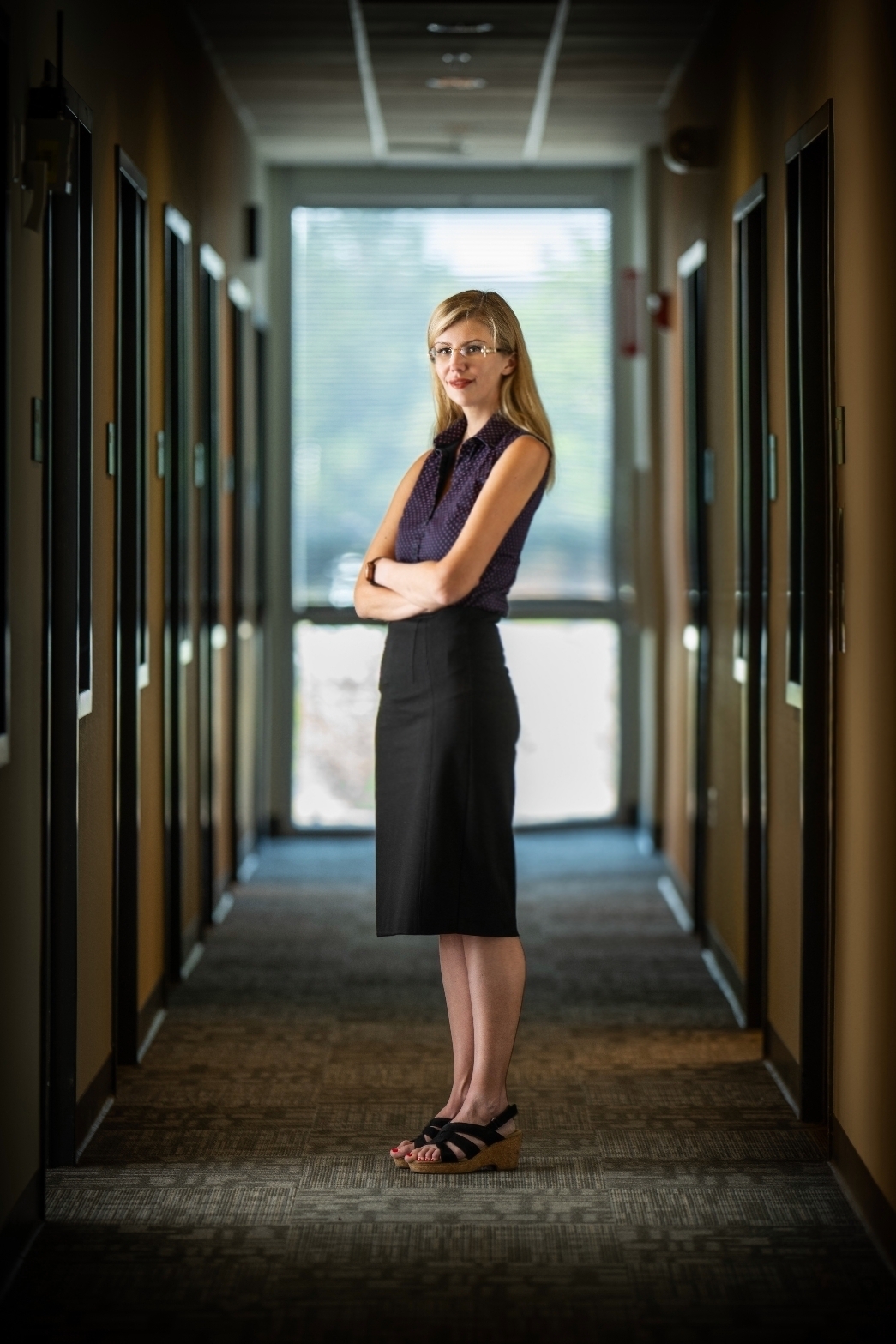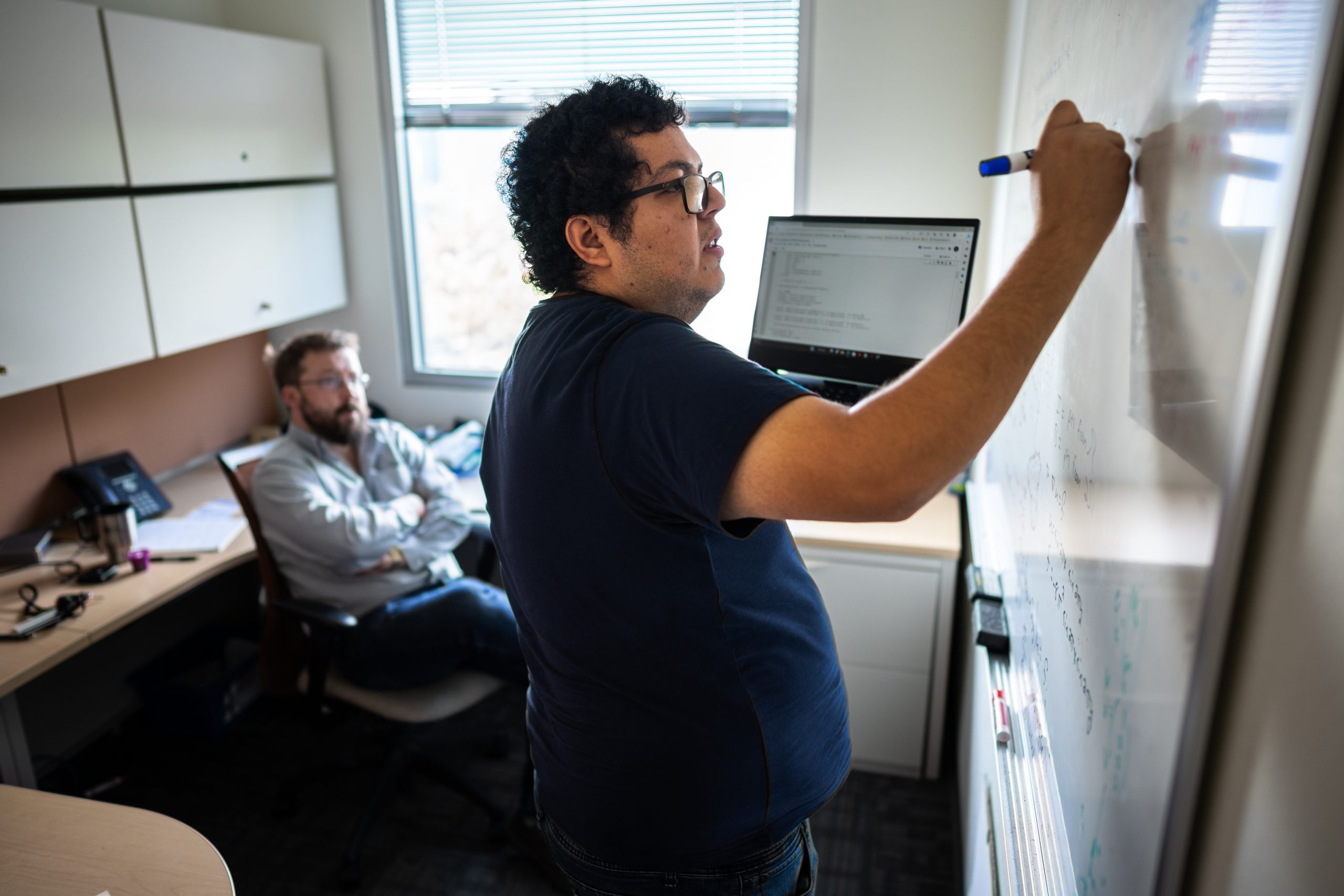
ALBUQUERQUE, N.M. — A government-funded consortium offering science and technology learning opportunities to student minorities aims to, over time, equalize workforce demographics at national laboratories, said leaders of the effort at Sandia National Laboratories.
The partnership, titled the Rio Grande Consortium for Advanced Research on Exascale Simulation, known as Grande CARES, is funded by the National Nuclear Security Administration’s Minority-Serving Institute Partnership Program, which is sponsoring similar efforts around the U.S.
The local result is a five-year partnership led by the University of New Mexico between Sandia and four regional universities, all with high minority populations: the University of Texas at El Paso, New Mexico State University, New Mexico Institute of Mining and Technology and Prairie View A&M University.
Grande CARES has both a research and an educational goal, said Irina Tezaur, lead Sandia scientist on the project. “The research goal is to integrate cutting-edge computational algorithms and tools for complex engineering problems,” she said. “Equally important, Grande CARES will develop scientists and engineers from under-represented communities. This should create a sustainable pipeline of researchers who are well-equipped to tackle the complex problems arising in Sandia’s mission spaces.
“The hope is to give students, who may come from underprivileged backgrounds, the opportunity to experience research in STEM firsthand and discover a path within this field with help from Sandia role models they can relate to,” Tezaur said.
Grande CARES was championed by the late director of Sandia’s Center for Computing Research, Scott Collis, who was actively involved for several years in getting the center funded. Collis did not live long enough to see the consortium come to fruition but passed the torch to Tezaur to continue and possibly enlarge the five-year program, she said.

Tezaur’s interest in helping minorities and the disadvantaged arose from personal experience: in 1992, as a child speaking no English, she emigrated to the United States with her family from Russia. Despite facing various challenges along the way, in 2019, she received the Presidential Early Career Award for Scientists and Engineers for her work in computational modeling.
“As a woman and an immigrant myself, I very much understand the value of role models in helping students achieve goals,” she said. “If you are considering a career in which there are virtually no role models that look like you or have a similar background, it is hard to imagine yourself being successful in that field.”
Grande CARES operates by funding collaborations between students, faculty from the affiliated academic institutions and staff scientists at Sandia. Students are matched with prospective Sandia mentors based on their research interests and background.
“The vision is to have the Sandia mentors work closely with the students and their advisors to design research projects that are mutually beneficial and foster a long-term collaboration,” Tezaur said.
Once projects are selected, Grande CARES students execute the work with help from their Sandia mentors during agreed-upon timeframes, which can range from two to three months for undergraduate students to four to five years for doctoral candidates. To facilitate collaboration, mentor-mentee engagement and to help widen their knowledge base, Grande CARES students are encouraged to visit Sandia for extended periods. During these visits, students are given access to advanced software, hardware and, importantly, subject matter experts.
The first batch of Grande CARES students – Arturo Rodriguez, a doctoral candidate, and undergraduate students Rene Reza, Kate Reza and Vicente Corral, all from University of Texas at El Paso — is currently in the process of completing their initial three-month summer 2023 visit to Sandia’s primary site in New Mexico. The students are mentored by Sandians Nat Trask, Jay Lofstead, Scott Roberts and Ember Sikorski, respectively, and their projects include developing machine-learned interatomic potentials, using unsupervised learning to identify features in satellite imagery, creating reproducibility standards in machine learning models and performing 3D image segmentation. New developments will be presented at fiscal year 2024 conferences and incorporated into journal publications. An additional 10 to 12 graduate and undergraduate students are expected to join the consortium in fiscal years 2024 and 2025.